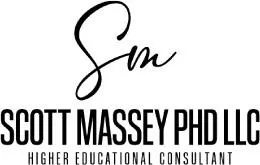BLOG
SCOTT'S THOUGHTS

Helping Struggling PA Students: A Proven Approach
John Smith is an aspiring PA student seeking guidance. He excelled as an undergraduate but has struggled since entering the PA program. "I study for eight hours a day—why aren’t my grades better?" he asks in frustration.
Many educators have encountered students like John. Early in my career, my advice would have been simple: "Just study harder." However, experience has shown me that a more strategic approach is needed. PA students must develop effective learning techniques, especially given the vast amount of material they must master in a short period.
A Turning Point in Student Support
As an academic coordinator in the early 1990s, I was responsible for tutoring and remediation. At the time, limited data analysis made it difficult to identify at-risk students. Many struggled with clinical medicine and later failed End of Rotation Exams. To address this, I experimented with study methods that emphasized key concepts rather than sheer volume. I also worked closely with students who had failed the PANCE exam, feeling a deep responsibility to help them succeed.
Over time, I noticed a striking pattern—students who adopted a structured note-taking method significantly improved their performance. Nearly every student who failed the PANCE passed on their second attempt after implementing this approach.
The High-Impact Notes (HIN) Strategy
The strategy was simple yet highly effective. I instructed students to create concise, 1- to 1.5-page summaries for each topic in the NCCPA blueprint. The template included key areas such as:
Definition
Etiology/Pathogenesis
Pertinent Historical Findings/Clinical Symptoms
Pertinent Physical Exam Findings
Differential Diagnosis
Diagnostic Evaluations
Medical Management
Surgical Management (if applicable)
Emergency Management (if applicable)
Patient Education/Prevention Strategies
As students adopted this method, I saw remarkable improvements, even among those who previously struggled.
The Shift to Learner-Centered Education
In 1998, I explored educational literature to refine this approach further, aligning it with learner-centered strategies. Students often ask, "What is the most important material to focus on?" Many only retain information long enough to pass an exam, rather than building lasting knowledge. The goal of PA education is not just exam success but producing competent, well-prepared practitioners.
Learner-centered strategies put students at the heart of the learning process, helping them build meaningful connections between concepts. By constructing their own study framework, students strengthen their ability to recall and apply knowledge in clinical settings.
Educational Foundations and Research
This approach is rooted in the American Psychological Association’s Principles of Learner-Centered Education and aligns with the metacognitive learning framework. It integrates multiple learning styles—visual, auditory, and kinesthetic—allowing students to retain and apply information more effectively.
One useful tool in this system is the VARK learning style inventory, developed by Neil Fleming. By identifying their preferred learning styles, students can tailor their study habits for deeper comprehension. A faculty-led workshop using these principles is highly beneficial early in a PA program.
Real-World Impact on Student Success
In 2006, I conducted a three-year study to evaluate the impact of this method on student outcomes. We required students to create High-Impact Notes (HINs) for key clinical topics in their didactic and clinical years. The results were dramatic.
Before implementation, the first-time PANCE pass rate was 83%. After incorporating this system:
96% passed in 2006
97% passed in 2007
97% passed in 2008
The findings were published in the Journal of PA Education in 2008:
🔗 Read the article
This approach was later expanded into the book Classroom to Clinic Study System – Personal Professor for Clinical Rotations and PANCE, published by FA Davis in 2011:
📖 Available on Amazon
The Fear of the Student We Can’t Help
Every educator dreads encountering a student they cannot assist. However, my journey as a PA educator has shown me that struggling students often just need the right tools to succeed. Seeing that "lightbulb moment" when a student finally grasps a concept is incredibly rewarding.
The HIN method has been adopted by PA programs across the country because of its simplicity and effectiveness. My hope is that more educators will implement structured, learner-centered techniques to support students like John—helping them not just to pass exams, but to become skilled, confident practitioners.
Perhaps one of you will develop the next great innovation in PA education. For me, it was my students who taught me how to better prepare future generations of PAs.

Helping Struggling PA Students: A Proven Approach
John Smith is an aspiring PA student seeking guidance. He excelled as an undergraduate but has struggled since entering the PA program. "I study for eight hours a day—why aren’t my grades better?" he asks in frustration.
Many educators have encountered students like John. Early in my career, my advice would have been simple: "Just study harder." However, experience has shown me that a more strategic approach is needed. PA students must develop effective learning techniques, especially given the vast amount of material they must master in a short period.
A Turning Point in Student Support
As an academic coordinator in the early 1990s, I was responsible for tutoring and remediation. At the time, limited data analysis made it difficult to identify at-risk students. Many struggled with clinical medicine and later failed End of Rotation Exams. To address this, I experimented with study methods that emphasized key concepts rather than sheer volume. I also worked closely with students who had failed the PANCE exam, feeling a deep responsibility to help them succeed.
Over time, I noticed a striking pattern—students who adopted a structured note-taking method significantly improved their performance. Nearly every student who failed the PANCE passed on their second attempt after implementing this approach.
The High-Impact Notes (HIN) Strategy
The strategy was simple yet highly effective. I instructed students to create concise, 1- to 1.5-page summaries for each topic in the NCCPA blueprint. The template included key areas such as:
Definition
Etiology/Pathogenesis
Pertinent Historical Findings/Clinical Symptoms
Pertinent Physical Exam Findings
Differential Diagnosis
Diagnostic Evaluations
Medical Management
Surgical Management (if applicable)
Emergency Management (if applicable)
Patient Education/Prevention Strategies
As students adopted this method, I saw remarkable improvements, even among those who previously struggled.
The Shift to Learner-Centered Education
In 1998, I explored educational literature to refine this approach further, aligning it with learner-centered strategies. Students often ask, "What is the most important material to focus on?" Many only retain information long enough to pass an exam, rather than building lasting knowledge. The goal of PA education is not just exam success but producing competent, well-prepared practitioners.
Learner-centered strategies put students at the heart of the learning process, helping them build meaningful connections between concepts. By constructing their own study framework, students strengthen their ability to recall and apply knowledge in clinical settings.
Educational Foundations and Research
This approach is rooted in the American Psychological Association’s Principles of Learner-Centered Education and aligns with the metacognitive learning framework. It integrates multiple learning styles—visual, auditory, and kinesthetic—allowing students to retain and apply information more effectively.
One useful tool in this system is the VARK learning style inventory, developed by Neil Fleming. By identifying their preferred learning styles, students can tailor their study habits for deeper comprehension. A faculty-led workshop using these principles is highly beneficial early in a PA program.
Real-World Impact on Student Success
In 2006, I conducted a three-year study to evaluate the impact of this method on student outcomes. We required students to create High-Impact Notes (HINs) for key clinical topics in their didactic and clinical years. The results were dramatic.
Before implementation, the first-time PANCE pass rate was 83%. After incorporating this system:
96% passed in 2006
97% passed in 2007
97% passed in 2008
The findings were published in the Journal of PA Education in 2008:
🔗 Read the article
This approach was later expanded into the book Classroom to Clinic Study System – Personal Professor for Clinical Rotations and PANCE, published by FA Davis in 2011:
📖 Available on Amazon
The Fear of the Student We Can’t Help
Every educator dreads encountering a student they cannot assist. However, my journey as a PA educator has shown me that struggling students often just need the right tools to succeed. Seeing that "lightbulb moment" when a student finally grasps a concept is incredibly rewarding.
The HIN method has been adopted by PA programs across the country because of its simplicity and effectiveness. My hope is that more educators will implement structured, learner-centered techniques to support students like John—helping them not just to pass exams, but to become skilled, confident practitioners.
Perhaps one of you will develop the next great innovation in PA education. For me, it was my students who taught me how to better prepare future generations of PAs.
Don't miss out on future events!
Subscribe to our newsletter

© 2025 Scott Massey Ph.D. LLC

